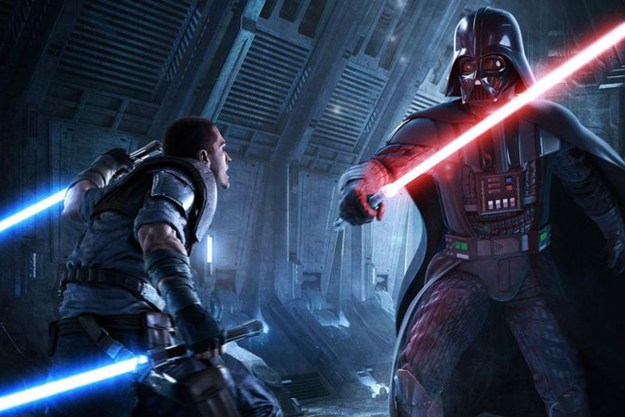Microsoft has officially discontinued the Xbox One X and Xbox One S, focusing its manufacturing on the newly released Xbox Series X and Xbox Series S. That said, it’s possible to find stock of Xbox One consoles available (or possibly new versions left over) at certain retailers, and considering the Series X|S is still nearly impossible to find right now, you may want to buy one of Microsoft’s last-gen consoles at a discount for the time being.
Between the Xbox One X, Xbox One S, and the original, previously discontinued Xbox One, there’s a big difference between their respective hardware specs, processing power, supported display resolutions, and prices that you should consider before making a purchase. They all run the same games, but how well those games run couldn’t be more different across the machines.
Before you decide which last-gen Xbox to buy, we’ll cover how the Xbox One X and S compare in important areas like framerates, resolution, HDR support, and more. Let’s see who wins this console duke-out and if either offers anything that the new Xbox Series X and S don’t.
Recommended reading:
- Where to buy the Xbox Series X
- Comparing the Xbox Series X and Xbox One launches
- Xbox Series X vs. Xbox Series S
Specifications
Xbox One |
Xbox One S |
Xbox One X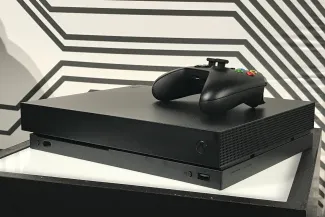 |
|
| CPU | 8 core, AMD custom CPU @ 1.75GHz | 8 core, AMD custom CPU @ 1.75GHz | 8 core x86 CPU @ 2.3GHz |
| GPU | AMD GCN GPU @ 853Mhz w/ 12 compute units | AMD GCN GPU @ 914Mhz w/ 12 compute units | AMD custom GPU @ 1,172MHz w/ 40 compute units |
| Weight | 7.8 lbs | 6.4 lbs | 8.4 lbs |
| Memory | 8GB DDR3, 32MB ESRAM | 8GB DDR3, 32MB ESRAM | 12GB GDDR5 |
| Memory bus | 256-bit | 256-bit | 384-bit |
| Memory bandwidth | 68GB/s, 204GB/s | 68GB/s, 219GB/s | 326GB/s |
| Storage | 1TB/500GB 2.5-inch HDD | 1TB/500GB 2.5-inch HDD | 1TB 2.5-inch HDD |
| AV Output | HDMI 1.4 in/out, 1080p support | HDMI 1.4 in/out, 4K, and 1080p support; Optical output; 4K video upscaling; HDR support | HDMI 1.4 in/out, 4K, and 1080p support; Optical output; native 4K playback; HDR support |
| I/O Output | USB 3.0 X 3 | USB 3.0 X 3 | USB 3.0 X 3 |
| Communication | Ethernet, IEEE 802.11n wireless with Wi-Fi connect | Ethernet, IEEE 802.11n wireless with Wi-Fi connect | Ethernet, IEEE 802.11n wireless with Wi-Fi connect |
| Controller | Xbox One controller | Updated Xbox One controller (includes Bluetooth connectivity and improved wireless range) | Updated Xbox One controller (includes Bluetooth connectivity and improved wireless range) |
| Camera | 512 x 424-pixel infrared depth sensor and 1080p camera (Kinect — adapter required) | 512 x 424-pixel infrared depth sensor and 1080p camera (Kinect — adapter required) | 512 x 424-pixel infrared depth sensor and 1080p camera (Kinect — adapter required) |
| Optical drive | Blu-ray | 4K UHD Blu-ray | 4K UHD Blu-ray |
| 4K Support | No | Yes, limited | Yes, native |
| Price | N/A | ||
| Availability | Discontinued | Discontinued (but stock may be available) | Discontinued (but stock may be available) |
| DT review | 4 out of 5 stars | 3.5 out of 5 stars | 4 out of 5 stars |
Hardware
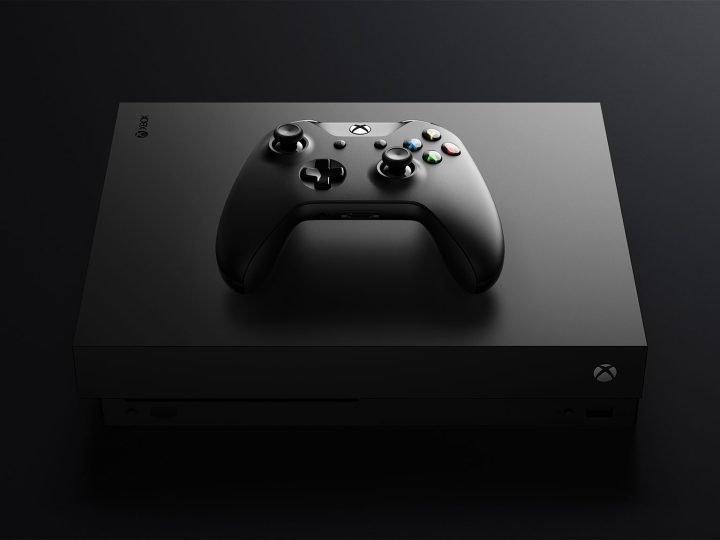
Since the Xbox One X is part of the Xbox One family, the biggest differences between it and the current Xbox One models are mostly internal. Microsoft has made distinct architectural changes to its design instead of simply throwing advanced technology at it to make it more powerful than the PS4.
The graphics chip in the Xbox One X packs 40 compute units into a slightly slimmer footprint than the Xbox One S, which has only 12.
The cores in the Xbox One X are also optimized for DirectX 12 and are clocked at 1,172MHz — much higher than the Xbox One and Xbox One S. The CPU offers a roughly 30 percent increase in clock speed, so it feels a lot more powerful in its own right.
All in all, the graphical performance of the Xbox One X is around the six teraflop mark, which means it has a little less raw power than an Nvidia GTX 1070 desktop graphics card but a little more than an AMD RX 480. That means the Xbox One X has more than 4.5 times the graphical performance of the original Xbox One.
The Xbox One X comes with a full 12GB of GDDR5 memory as well, which gives developers a lot more leeway and really helps the system handle 4K content as compared to the original model. In comparison, the original Xbox One has only 8GB of DDR3 memory. The 1TB internal hard drive in the One X is as much as 50% faster, which leads to better boot times and a reduction in loading screens over previous generations of the console.
Winner: Xbox One X
Design
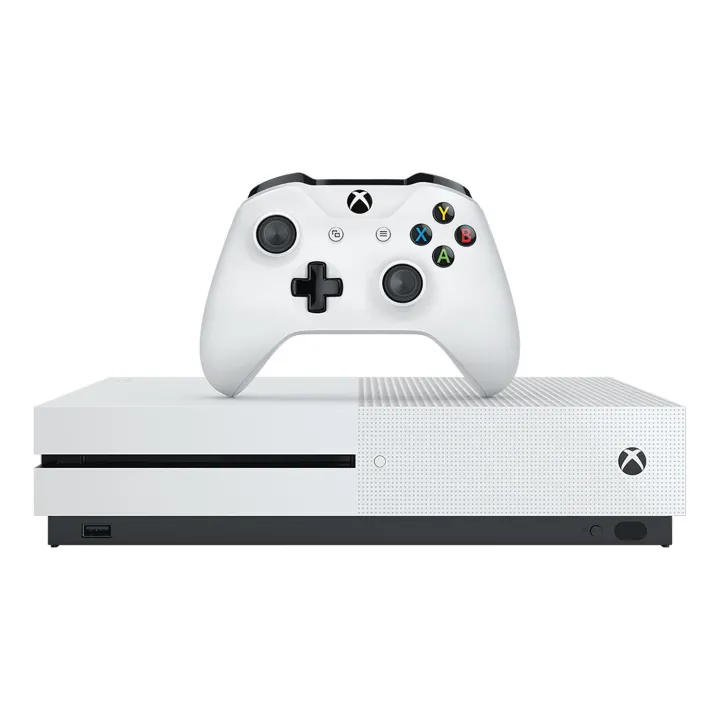
In terms of physical design, the Xbox One X sports a matte black finish, distinguishing itself from the white finish of the Xbox One S. With great power, comes (relatively) great weight. The Xbox One X weighs 2 pounds more than the Xbox One S. Despite the extra heft, the difference in physical size between the two is marginal. Either way, the days of the giant Xbox One crowding your media center are over.
The consoles have identical port layouts on the back and feature built-in power supplies. Both include a single USB port on the front, although on opposite sides. On the Xbox One X, the eject button sits below the disc slot rather than to its side as it does on the Xbox One S.
A lot of people buy all their games digitally these days, and if you’ve moved beyond discs, the Xbox One S comes in an “all-digital” edition with no disc drive. In terms of appearance, the black strip where the disc drive would normally be is gone, leaving a solid white facade — though these systems are difficult to find.
The main design difference between the two that may actually affect how you organize your entertainment center is fan placement. On the Xbox One S, heat comes through the top of the console when it is running. The Xbox One X disperses heat through the back of the console. This means that you can stack other consoles, DVD players, TV boxes, etc., on top of the Xbox One X without the fear of overheating your system.
Even though the Xbox One X borrows a lot from the Xbox One S in its design, the reworked fan design gives the Xbox One X the edge. Depending on your preference and setup, you might choose the Xbox One S due to its design and smaller size. Ultimately, though, we’ve got to hand it to the Xbox One X for its fan placement.
Winner: Xbox One X
Resolution and framerate

All that power is designed to drive what is considered by many to be the next big benchmark for mainstream gaming: 4K resolution. At four times the detail level of now-standard 1080P, 4K offers a crisper picture and more true-to-life visuals. Considering the original Xbox One struggled at times to deliver 1080p at anything over 30 frames per second, a big part of the Xbox One X’s design is to enable Ultra HD resolution gaming at higher framerates.
Since the console’s launch, many games have been updated to support full 60 fps and playback at 4K on Xbox One X. You can find a constantly updated list of those games here.
Visuals in updated games are sharp, and the HDR brings intense light and murky shadows to life in a way no other console could replicate at the time. But a lot of the appeal fades when it’s hooked up to a 1080p TV without the contrast and brightness needed for HDR. That is what most people are still using for their gaming, and the Xbox One X is certainly meant to be experienced on a high-end setup. Users with older TVs will still see some jumps in performance regarding framerate and improved textures, but a 4K screen truly unlocks the power of the Xbox One X.
Winner: Xbox One X
Home theater support
While the Xbox One X offers the capability of 4K streaming on Netflix or YouTube, until ultra-high-speed internet becomes more commonplace, a 4K UHD Blu-ray player will be a necessity for those who want to take full advantage of their 4K TV. While that means buying a Blu-ray player, if you can have that bundled with a console upgrade that also lets you take advantage of 4K gaming, all the better.
There is no question here, the Xbox One cannot compete when it comes to 4K media support. The Xbox One S can, however, so it remains a viable option for anyone only looking to upgrade that functionality.
Like the Xbox One and Xbox One S, Xbox One X supports Microsoft’s own in-house developed HRTF as well as bit rate passthrough for audio, and it features Dolby Atmos support for those of us lucky enough to have such a setup. Since both the 4K Blu-ray player and the high-end audio solutions are available in both the Xbox One S and Xbox One X, either console comes in as an excellent addition to your home theater setup. However, the Xbox One X, as the newer, more advanced console, gives you more options to enhance your all-around entertainment experience.
Winner: Xbox One X
HDR
High-dynamic range (HDR) is the other major display technology that hardware manufacturers are using as a reason for consumers to upgrade, and the Xbox One X comes with full support. This allows the system to work with displays that support HDR to produce a wider range of bright and dark lights, usually with the help of OLED or local dimming. Explosions look like real fire, and shadows have greater detail, in a way that is hard to explain without seeing it.
That is something that the Xbox One simply cannot do, so it falls behind there. Both the Xbox One S and Xbox One X support HDR10 with compatible games and offer noticeable visual improvements.
Winner: Tie
Game support and backward compatibility
Much like the PlayStation 4 Pro, it’s up to developers to take advantage of the Xbox One X’s extra power with better framerates and native 4K support. Microsoft has been steadily announcing titles that support 4K and/or HDR, and we are keeping updated on those titles in another post.
As far as game support goes, all the same games play on the Xbox One, Xbox One S, and Xbox One X. That includes access to the backward-compatible Xbox 360 library. A small selection of Xbox 360 games, including Halo 3 and Fallout 3, have even received Xbox One X updates for better performance, so for that, it’s hard to choose anything else.
Winner: Xbox One X
Price and availability
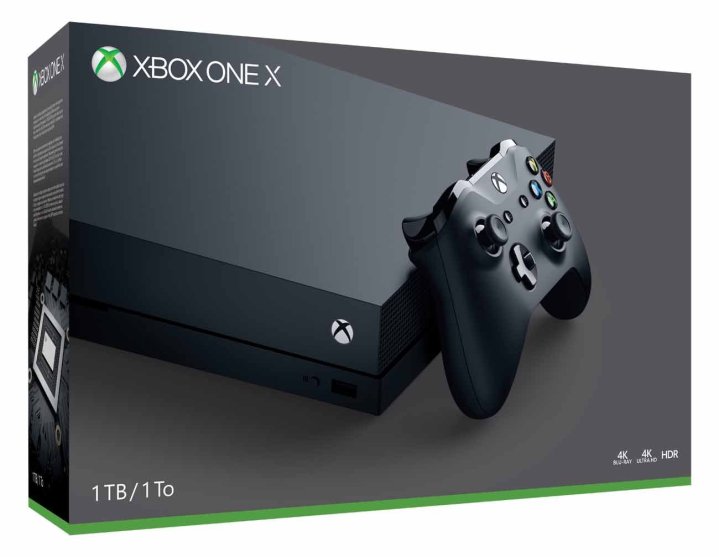
Before they were discontinued, you would often find Xbox One S bundles for $300 and Xbox One X bundles for $400. At the time, you could reasonably argue that the One X justified the higher price with its spec upgrades, but the One S often went on sale for as low as $250, making it a better option if you didn’t care about improved framerates or 4K UHD Blu-rays.
Today, after scanning through most major retailers, we noticed that very few are still carrying new Xbox One S and Xbox One X consoles. You may be able to find an Xbox One X on sale with gaming-specific retailers like GameStop, but it’s almost guaranteed to be refurbished while still costing upward of $400. As for the Xbox One S, these are slightly easier to find, but not by much.
If you’re leaning toward the One X because of its better specs, you can certainly go that route. But you may want to go with an Xbox Series model instead, which will give you greatly enhanced specs for a similar price, along with backward compatibility for all Xbox One games (assuming you can find one). In short, you’ll have an easier time finding an Xbox One S system than the Xbox One X right now, but as Microsoft has shifted gears to manufacturing its Series X|S line, the older systems have been scarce.
Winner: Xbox One S
Competing with the Xbox Series consoles
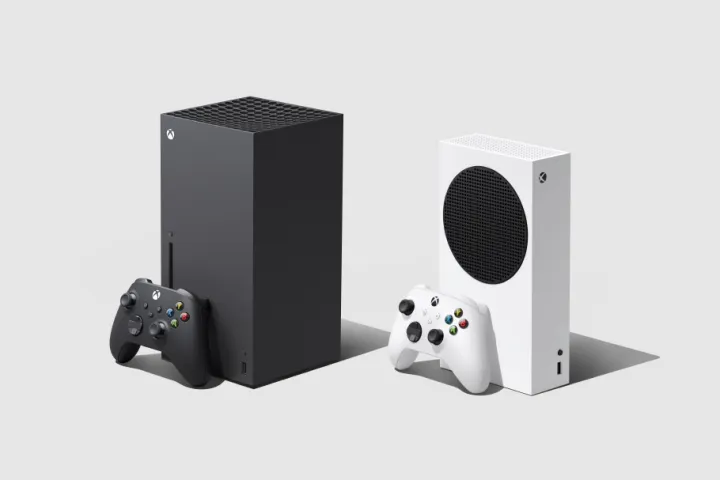
Of the two last-gen consoles, only the Xbox One X comes somewhat close to holding its own against the Xbox Series S — though nowhere close to the Xbox Series X. The Xbox One X has 12GB of memory versus 10GB with the Series S, plus 6 teraflops of graphics versus 4 teraflops with the Series S. They both have eight CPU cores, and the One X has a terabyte of storage versus 512GB on the Series S. Plus, the Series S is stuck at 1440p for gaming, while the One X offers 4K gaming if you own a 4K TV. While the Series S does support 4K streaming, it lacks an optical drive, meaning only the Xbox One X can double as a 4K UHD player.
Overall, however, the Series S is still a superior piece of machinery. Even if it’s smaller in pure gigabytes, its solid-state drive drastically reduces loading times versus the One X’s hard drive. Its eight cores hit 3.6GHz instead of a mere 2.3GHz. Even with fewer teraflops, the Series S supports effects like ray tracing and dynamic lighting that the Xbox One X cannot. Most importantly, the Series S consistently hits 60 fps and can rise as high as 120 for some games, while the One X may hit 4K but is stuck at 30 fps in that mode.
If you specifically want a gaming console that doubles as a Blu-ray player, either the Xbox One S or Xbox One X is a better option than the Series S. And the One X does have some minor areas where it shines above the Series S. Otherwise, you’ll likely want to upgrade to a newer console, which will play Xbox One games with better graphical settings than the Xbox One consoles themselves.
Overall winner: Xbox One X
Conclusion
With the Xbox One horse race down to two consoles, you have the choice between power and affordability (and availability). The Xbox One S offers a quality system at a lower price and is also more likely to be in stock. For many, and especially those without a 4K TV, the Xbox One S is a great option. If you want to get the best performance out of your console games, though, the Xbox One X is the system to get, assuming you can find one.
Overall winner: Xbox One X
Editors' Recommendations
- Best video game deals: PlayStation 5, Xbox S and X, Nintendo Switch
- The most common Xbox Series S problems and how to fix them
- All cross-platform games (PS5, Xbox Series X, PS4, Xbox One, Switch, PC)
- Best Xbox Series X and Series S deals: discounts and bundles
- Fallout 4 is finally getting free Xbox Series X and PS5 upgrades




